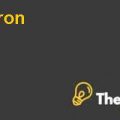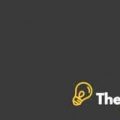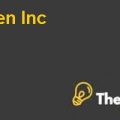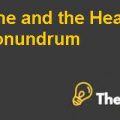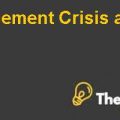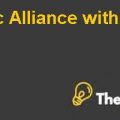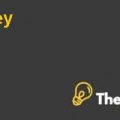
CHAPTER 2: LITERATURE REVIEW
2.1 Introduction
Recently, it has been a common practice that the traditional costing system has been widely criticized through various studies conducted on the topic. The criticism has been mainly due to the way the system has been following the provision of ample information about the related costs and how the accurate information is important for the decision making. Therefore, it is important to identify the accuracy of this information, which is vital for the consequent reactions. As a result of ABC costing, this was established way back in 1980s to represent the major changes in the way that companies track costs and to mitigate all the issues, which were associated with traditional costing techniques. Therefore, the chapter aims to view the theoretical and empirical literature of the ABC in comparison to the other system of costing that is the traditional system and take into account the various theoretical perspectives that are followed by the Activity-based costing in managing costs (Garrison, 1999).
2.1.1 The need for costing system
The global competition in the world has forced some of the manufacturing services to become more flexible, reduce costs and increase productivity. This shows the significance and importance of an efficient and effective costing management system that various companies need to be considered and sustain the competitiveness. It is also an indicative trend, which is renewed and committed to excellence in the industries through various methods such as the reliable financial planning, the controlling manufacturing costs and the viability of standards for production efficiency (Dolan, 1997).
Focus have been paid to product quality and inventory levels, related processes and the workforce improvement; which has led the firm to become a world class business and to be considered as the best run company (Raffish, 2001). Recently, it has been seen that the environment has shown quite a few changes in terms of the development of new accounting standard systems and advanced technology with the increasing difficulties of global competition. In addition to this, the argument of costing has become an assessment program, which has been concentrating on the csost of buying the service or product where most companies need to keep constantly improve their business strategies and the different volumes by sharing information. This requires the communication that has enabled companies to understand and elaborate the launch of an accurate decision making tool to interpret the pricing, logistics and substitutions (Hicks, Douglas 2003).
Along with this, there are also various important different functions that need to be performed by companies and should be based on a sufficient costing system where these functions include cost allocation between cost of goods sold and the stocks in order to prepare an external profit report. Along with this, companies are also required to provide relevant cost information in order to be able tomanage costs and various activities as well as various services. Along with this, a management department of the world is also considering the detailed economic feedback given to managers, which can have a rather positive impact on a firm’s performance by actually taking into account any relevant recommendations (Hicks, Douglas 2003).
2.2 Background of ABC
2.2.1 The concept and introduction of ABC
Activity-based accounting is a method that is used to calculate the cost of each activity that is required to produce a product. Concept of Activity-based costing was introduced by Robert Kaplan and William Burns in 1980s. This concept was given attention when in 1999; Robin Cooper and Robert S. Kaplan published their articles in Harvard Business Review (HBR). It was described in that article that how Activity-based costing can solve traditional cost management system. It is because traditional method does not give actual cost and the cost related to the services. As a result, managers were not able to make correct decision. It became more difficult for managers to make decision when there were many products (Rimson, 1997). In 1997, Robert S. Kaplan and W. Bruns defined Activity-based accounting clearly for the first time in their book “Accounting and Management: A Field Study Perspective”. Manufacturing industry was focused because at that time, direct cost was reducing while indirect cost was increasing due the rapid change in technology and high productivity. Later, Peter F. Drucker defined Activity-based costing in his book “Management Challenges of the 21st Century”. In his book he defined that traditional method calculates the cost of what is done while Activity-based accounting calculates the cost of what is done and what is not done (Barton, 2003).......................................
This is just a sample partial case solution. Please place the order on the website to order your own originally done case solution.

